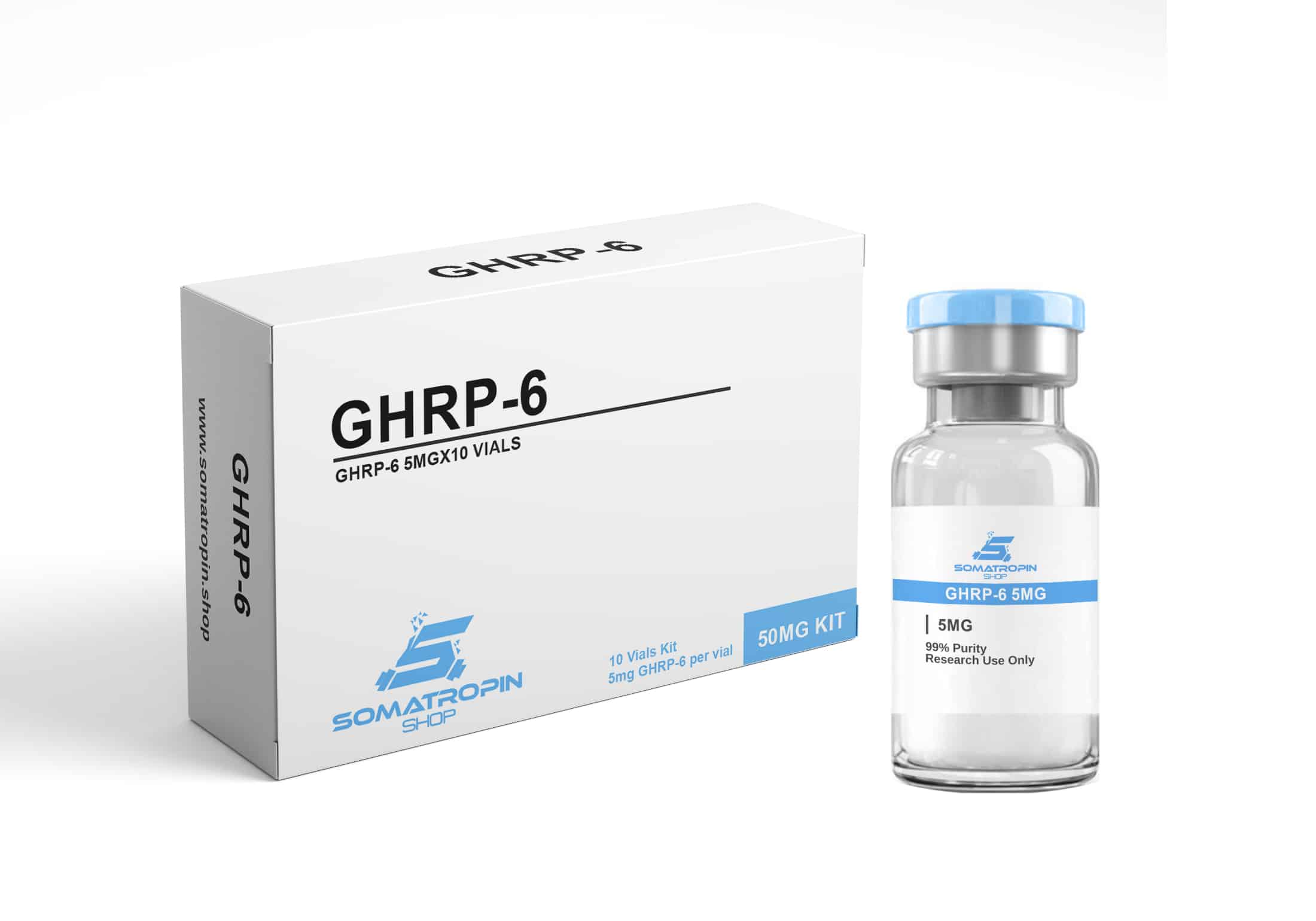The subject of this article will revolve around GHRP-6 peptide and research on digestive health.
Studies suggest one synthetic peptide created to potentially stimulate the production and regulate growth hormone levels is called growth hormone-releasing hexapeptide-6 (GHRP-6). GHRP-6 is a synthetic peptide with a low molecular weight that has shown potential in studies of growth hormone stimulation.
The original goal of creating growth hormone-releasing peptides (GHRP) was to create a substance that would function similarly to growth hormone-releasing hormones (GHRHs). In 1984, when scientists first identified GHRH, they speculated that the chemicals could have different functions, with GHRPs showing an apparent propensity to connect with ghrelin receptors [ii]. Scientists believe GHRPs, like the naturally occurring hormone ghrelin, seem to control activity by stimulating the hypothalamus, which might affect metabolic and nutritional processes.
Contents
Overview
In order to learn whether GHRP-6 needs endogenous GHRH presence to exhibit its potential, studies were done. In one clinical trial [iii], nine subjects aged 20 to 30 were randomly assigned to receive either a GHRH antagonist or saline, following which they were given GHRP-6 20 minutes later. Over the next hours, blood samples were taken at regular intervals to analyze growth hormone levels. Researchers suggested that subjects who were given a GHRH antagonist seemed to have lower levels of HGH than those who were given a placebo. They speculate that GHRP-6’s putative action may need endogenous GHRH.



Although GHRP-6’s mechanism is still being investigated [iii], studies have suggested that GHRPs may act by binding with two receptors: GHS-R1a and CD36. By binding with CD36 receptors, GHRP-6 may stimulate prosurvival cellular pathways [i] and potentially increase HGH secretion. The circumstances are still being looked into.
Prior speculation suggested that GHRP-6 could have a dual mode of action, affecting both the pituitary gland and the hypothalamus. The mechanism of action was explored in a group of 23 subjects, including 12 with hypothalamic-pituitary disconnection and 11 controls, in research [iv]. Subjects received either GHRH, GHRP-6, or both agents.
All 23 subjects had their HGH levels checked after the presentation. The subjects in the control group who received both GHRH and GHRP-6 seemed to have the highest HGH levels, followed by the GHRP-6 subjects and the GHRH subjects. However, in subjects with hypothalamic-pituitary disconnection, the opposite proved true: those given both GHRP-6 and GHRH appeared to have the lowest amounts of HGH. Subjects given GHRH appeared to have the same levels of HGH as controls, while subjects given GHRP-6 alone reportedly had lower HGH levels. Researchers hypothesized that GHRP-6 acted on the hypothalamic-pituitary axis to generate its potential and that GHRP-6 activity may be largely produced in the presence of GHRH.
GHRP-6 Peptide and the Thyroid
When the thyroid gland is underactive, there is less secretion of growth hormone. The primary objective of this research [v] was to assess the feasibility of using GHRP-6, a putative HGH release-boosting substance, to offset the action of natural HGH decline. Hypothyroid subjects were randomly assigned to receive one of three GHRH and GHRP-6 concentrations.
After the study, the researchers speculated that subjects given either GHRP-6 alone or a combination of GHRP-6 and GHRH seemed to induce significantly higher levels of growth hormones than subjects given GHRH alone. One probable explanation is that GHRP-6 is structurally distinct from GHRH and may act as a functional antagonist of somatostatin in the pituitary, making it more likely to have a greater impact on hypothyroidism than GHRH.
GHRP-6 And Hormone Secretion
The potential effects of GHRP-6 peptide on nighttime hormone secretion and electroencephalogram (EEG) sleep were investigated in a recent clinical investigation [vi]. In this study, male test subjects were given either the GHRP-6 peptide or a placebo. Researchers found that GHRP-6 seemed to stimulate greater growth and cortisol (ACTH) hormone production.
While the other sleep EEG variables appeared unchanged, cortisol hormone release and stage 2 sleep appeared to be enhanced throughout the night, especially during the first half. Based on the results of this investigation, it seems that GHRP-6 may work on the hypothalamic-pituitary-adrenal axis to mobilize cortisol hormone release in addition to inducing growth hormone release.
GHRP-6 Peptide and EGF
The primary purpose of this investigation [vii] was to compare the action of GHRP-6 and epidermal growth factor (EGF) on multi-organ dysfunction. This research has been replicated twice: once on experimental damage and multi-organ failure models and once on rat gut and colon cancer cells. The first investigation suggested that GHRP-6 may have affected cell migration in the gut epithelial cells by three times the control rate without affecting cell proliferation.



Lipid peroxidation and severe liver and intestine damage resulted from a multi-organ failure in the second model. It was observed that these damages might be mitigated by 50–85% when GHRP-6 was provided, with even greater activity when GHRP-6 was presented in conjunction with EGF.
Only academic and scientific institutions are allowed to purchase peptides online. If you are a licensed professional interested in purchasing GHRP-6 peptides for your clinical studies, visit Biotech Peptides. Please note that none of the items listed are approved for human or animal consumption. Laboratory research chemicals are only for in-vitro and in-lab use. Any kind of physical introduction is illegal. Only authorized academics and working professionals may make purchases. The content of this article is intended only for instructional purposes.















